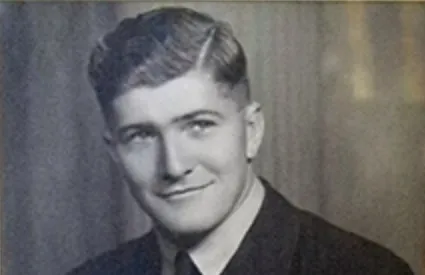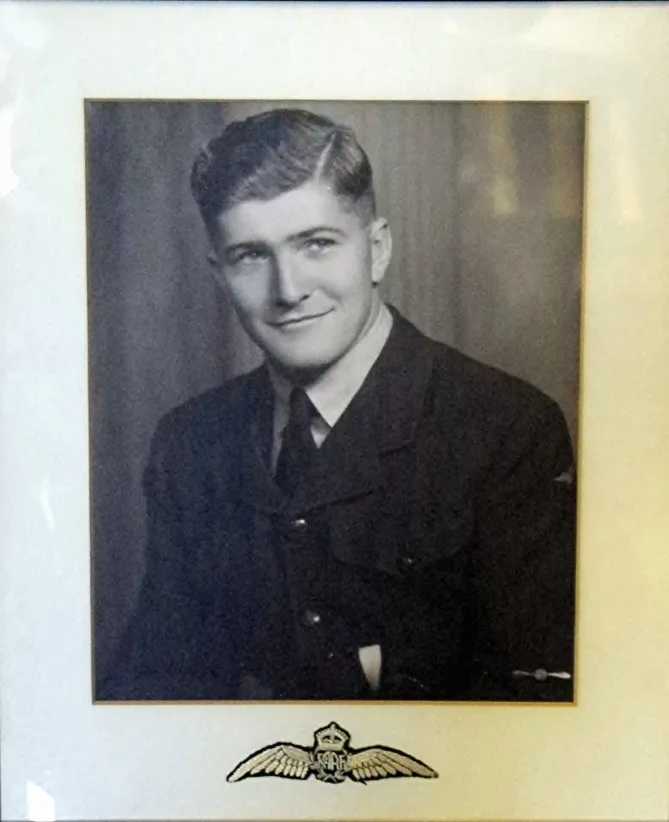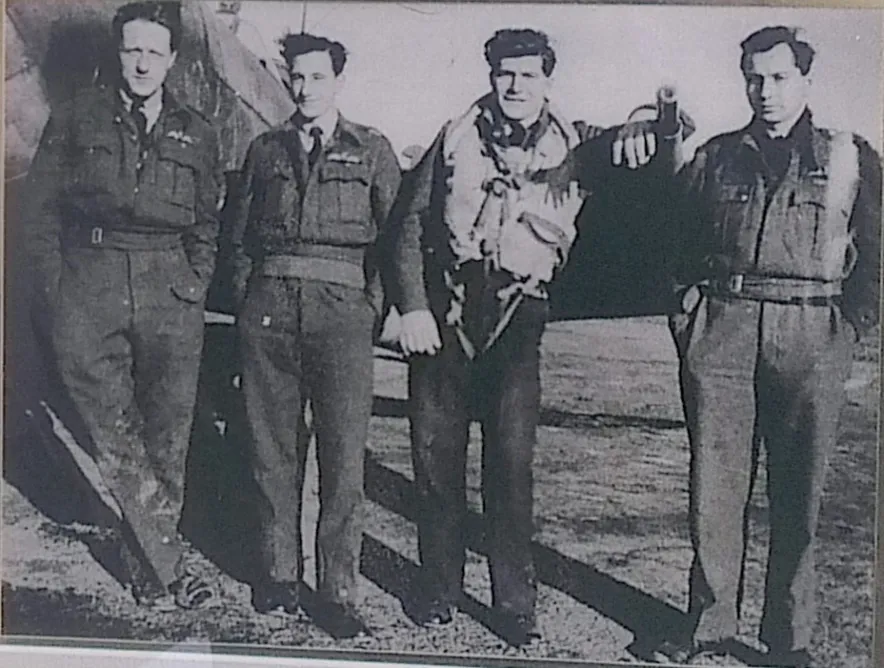FLTLT Richard James Conroy 412113
MiD



| Squadron/s | 129 SQN RAF 234 SQN RAF |
| Rank On Discharge/Death | Flight Lieutenant (FLTLT) |
| Nickname | Guns |
| Contributing Author/s | By Michael and David Conroy (sons) Edited by Steve McGregor The Spitfire Association |
Richard, nicknamed Guns as one of his duties was being in charge of the squadron amour, was born in Bondi, NSW on the 3rd September 1922.
He enlisted in the RAAF on the 22nd of June 1941 and trained in Wagga Wagga. During the course of his time in the air force he flew tiger moths by the seat of his pants and Wirraways also sorted out the bugs and honed his skills as a pilot.
He arrived in England in 1941 and was attached to the RAF in the heat of the battle where he upgraded to Masters aircraft. He then started flying the famous Spitfire fighter, flying numerous missions over the Channel Islands with 129 and 234 Squadrons.
He was shot up by a Focke Wulf 190 defending a fellow squadron member and had to make a forced landing.
One escapade was when he was shot down over France when he was flying his Mustang P51 which had a damaged magneto thus forcing him to land in a small landing field close to enemy lines. Upon landing he noticed the airfield appeared deserted except for an aircraft hangar at the other end of the airfield, so he grabbed his service revolver (the best one in the armoury, seeing he was in charge of it) and ventured up to the Hangar.
Upon entering the hangar he noticed, to his surprise and horror, that it was filled with German aircraft (Fiesler Storche reconnaissance planes). As a consequence of his stumbling on this find he made a hasty retreat fearing they might be booby trapped.
Later he made his way to the other end of the airfield and he came upon an American army air unit who informed him the Germans had only left the previous afternoon. He stayed with the Americans for several days while they repaired his damaged magneto during which time he visited the Local town several times where he purchased bottles of champagne (and drank quite a few also).
When his Mustang was repaired he stored the champagne in the empty Gun magazines in the wings and flew back to England (flying at a lower level so as not to pop the champagne corks). Eventually he was reunited with his squadron who were overjoyed to see him (especially with the Champagne).
Came D Day Guns was over the troops in a Mustang and as the flying V1 bombs hit England he was in the fray. He shot down six of these lethal weapons at great risk to his own life and subsequently saved much property and many lives.
Back in Europe he mastered his own technique of strafing convoys which almost cost him his life. While strafing a truck in a German convoy it must have been laden with ammunition because it exploded beneath him and almost brought him down.
Guns Conroy was awarded a Kings commendation and high appreciation. He was mentioned in dispatches for distinguished service which was published in the London Gazette on the 14th June 1945.
He was discharged 14/11/45 from being a fighter pilot along with many thousands of fellow officers and other ranks at the end of the war and was only aged 23.
In closing his son Mick said, “Dad told us many such stories as this. Tragically Dad died on the 20th of October 2006, a brave man, sadly missed.”
David Conroy shared this memory of visiting England with his dad, Flight Lieutenant Richard "Guns" Conroy MiD.
In June 1994, I accompanied Dad to England for the 50th Anniversary of the D-Day Celebrations. As we flew over Germany in a 747 jet, he said to me – 'you know Dave, the last time I flew over here I was being shot at by the Germans'.
He was attached to RAF Squadron 129 (Mysore) and the reunion was held at Coolham Airfield in Sussex, together with Polish and American Bomber Squadrons, where (in 1944) they were used to conduct missions to support the D-Day landings into Normandy/France and escort the Bombers to their targets.
We met in a little pub on the side of the Airfield – the Selsey Arms – and were the last to arrive. He hadn't seen his English colleagues in 50 years. After an initial pause, in recognition they claimed him the Squadron Leader, shouting 'Guns, you don't deserve all that hair'. I tried to melt into the background (hard in a small English pub), but they wouldn't hear of it.
A few days of flying activities and displays at the Airfield, together with reunion dinners and a church service, with a flyover by several Spitfires, and it ended. Left with a lot of wonderful memories, a commemorative tape, and a signed painting of the Wing Commander 'leading the boys out'.

